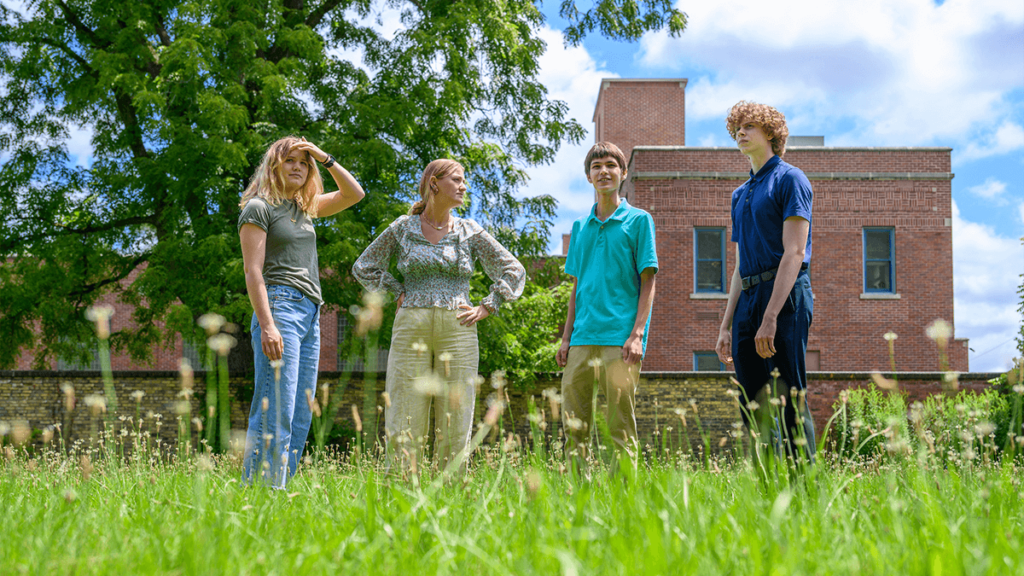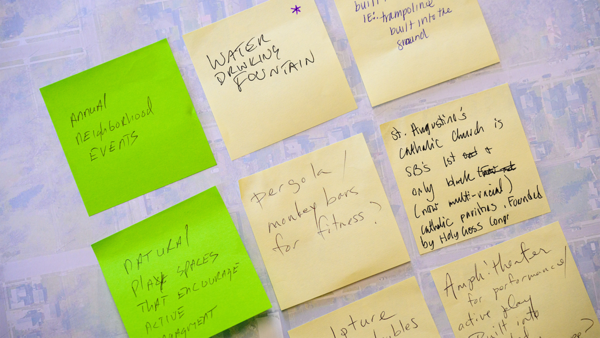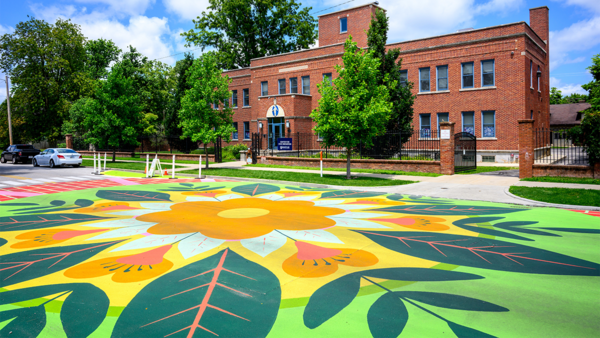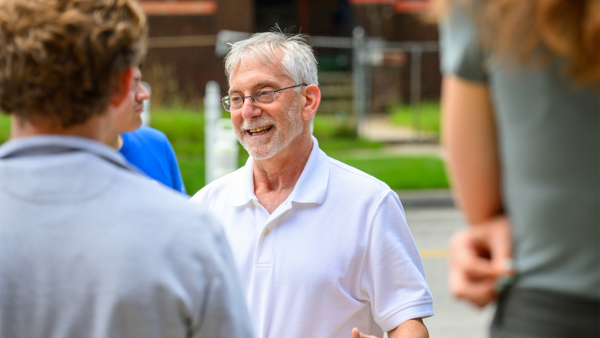
(Photo by Matt Cashore/University of Notre Dame)
South Bend’s Near West Side is one of the oldest neighborhoods in the city. Its tree-lined streets are dotted with large wood-framed homes in various architectural styles, alongside sprawling 19th-century granite and limestone estates with distinguished-sounding names such as Copshaholm and Tippecanoe Place.
Situated along historic West Washington Street, the neighborhood is home to a variety of museums and cultural institutions — The History Museum, Studebaker National Museum, Civil Rights Heritage Center, Notre Dame Civic Innovation Lab — and is just steps from downtown, with its many shops, restaurants and visual and performing arts venues.
Still, for all of its history and character, the neighborhood lacks an important amenity: park space.
Residents can wander the grounds of the Oliver Mansion or City Cemetery or head south along Chapin Street to the Kroc Center. Otherwise, the nearest public park is about a 20-minute walk away, on the other side of a busy street.

Inspired by recent planning efforts, however, residents are banding together to create green space in the margins of the neighborhood where none currently exists — and with an assist from the University of Notre Dame.
Since June, interns with the Civic Innovation Lab, part of the Lucy Family Institute for Data and Society, have been seeking input from residents, both online and in-person, on a proposed park on vacant property in the 1100 block of West Washington Street, directly west of the Civic Innovation Lab.
South Bend Heritage Foundation, a nonprofit community development organization, owns the property, which comprises two separate, side-by-side lots measuring one quarter acre each. The land would be deeded to the city if it were to become a park.
As proposed, the park would be part of a larger greenway with benches, flower beds, comfort stations and other features and amenities, linking museums and other points of interest in the neighborhood along a linear path.
“The greenway is essentially a path that’s going to run from the Kroc Center to City Cemetery, and it’s kind of a series of projects that are recreational and privately owned but open to the public,” said Sofia Frazee, a rising sophomore studying comprehensive design at Indiana University Bloomington.
Frazee, of South Bend, is one of four interns on the project. The others are David Meininger, of Columbia, Missouri, a rising sophomore studying computer science at Notre Dame; Padraig Chapman, of South Bend, a rising senior at Riley High School; and Madelyne Moore, of Osceola, Indiana, a rising sophomore studying health care management and policy at Indiana University Bloomington.
The group is working closely with the South Bend Greenway Conservancy, a nonprofit cofounded by Near West Side residents Andrea Crawford and Megyn Edmonson to advance the greenway and generate support and enthusiasm for the project among neighbors and community leaders.

To that end, the conservancy, in partnership with the Near West Side Neighborhood Organization and with support from the city of South Bend, organized a recent mural/crosswalk project as a demonstration of the greenway and to build critical momentum for the project.
The mural, spanning the width of West Washington Street between the Civic Innovation Lab and Civil Rights Heritage Center, is meant to calm traffic, improve safety and improve connectivity in the area.
Dozens of volunteers, from the Civic Innovation Lab and elsewhere, joined with local artist Chris Silva to create the mural the weekend of June 8-9. Data collected before and after the project show it is working to slow traffic.
“It was a great relationship-building exercise between the city and community,” including the Civic Innovation Lab and other organizations, Edmonson said of the project, which is temporary until a permanent, raised crosswalk can be installed in the area.
So far, Frazee said, residents surveyed about the park have expressed support for the project, suggesting it include drinking fountains, benches and equipment designed to promote learning through play.
“One of the best things about South Bend is the network of people across all kinds of organizations that are committed to making things happen for the good of our city. Our interns get to spend a summer in the middle of that.”
“We want to make sure that we’re really taking the time to get their feedback, build those strong connections with them and build their trust,” Frazee said of the residents.
The interns have also been researching the history of the proposed park property within the context of the surrounding neighborhood, which was a popular landing spot for Black men and women fleeing violence and discrimination in the South for security and economic opportunity in the North during the first half of the 20th century.
According to Moore, it’s about respecting the history of the neighborhood.

“Initially it was kind of sensitive talking to neighbors about what we could do with their land, especially with the history of it,” Moore said. “So that’s something we’re really trying to concentrate on when talking to neighbors, understanding that they may have had ties to whoever previously lived there.”
Looking ahead, the interns will survey residents more formally about the park, asking them to rate proposed features and elements on a scale of 1 to 5. The resulting data will be organized and incorporated into a final proposal for the park to be presented to the neighborhood association and others at the end of the month.
Jonathon Geels, principal landscape architect and president of the Troyer Group, is assisting with the design process as a consultant to the conservancy along with Dominic Catanzarite, a Ball State University student from South Bend who is currently interning with the Troyer Group.
“It’s been a really good experience,” Frazee said, “and I’m excited to see what comes of it.”
Established in 2018, the Civic Innovation Lab (formerly the Center for Civic Innovation) hosts dozens of students annually as part of its summer internship program. The students work closely with Notre Dame faculty and staff as well as local stakeholders to tackle pressing civic and industry issues in the South Bend-Elkhart community, with a focus on data-driven problem-solving.
This year’s cohort, consisting of both college and high school students, is working on a variety of issues related to community development, environmental sustainability and resilience, and transportation and walkability.
Jay Brockman, professor of the practice in the College of Engineering, is the director of the lab.
“One of the best things about South Bend is the network of people across all kinds of organizations that are committed to making things happen for the good of our city,” Brockman said. “Our interns get to spend a summer in the middle of that. Each of our intern teams learns how to use qualitative and quantitative data to make better decisions across a range of issues, but in the end, the most important thing they learn is how to do their part as a member of a community.”
For more information, visit lucyinstitute.nd.edu/cil/.
Contact: Erin Blasko, associate director of media relations, 574-631-4127, eblasko@nd.edu